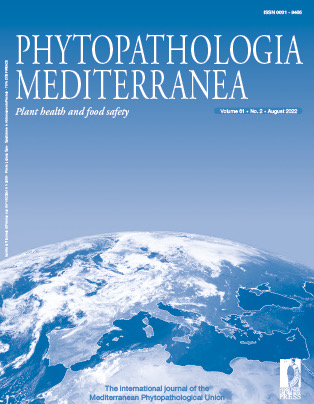Published 2022-09-15
Keywords
- Anthracnose,
- molecular diagnostics,
- Ocimum basilicum,
- seeds
How to Cite
Abstract
Colletotrichum ocimi causes black spot of basil (Ocimum basilicum) and is a serious threat to basil cultivation as it compromises leaf production. The pathogen also infects seeds, which could become primary sources of inoculum for spread of black spot. A SYBR Green real-time PCR assay was developed to detect Colletotrichum ocimi in basil leaves and seeds, based on the partial β-tubulin (tub2) gene sequence. Two primer sets were designed and tested. The selected primer pairs produced amplicons of 130 bp. The real-time PCR assay was validated for analytical specificity, sensitivity, selectivity, repeatability and reproducibility. The assay was specific for C. ocimi with respect to ten Colletotrichum spp. and to another 12 pathogens of basil plants. Sensitivity was 1 pg µL-1 of genomic fungal DNA and amplification analyses were not influenced by basil genomic DNA. The assay detected and quantified C. ocimi in artificially inoculated basil leaves. This is the first specific primer set for C. ocimi, which allows rapid detection and quantification of the pathogen is a useful tool for diagnostics in plants. Detection in seeds would also be possible, but will require an optimized extraction method. The qPCR detection of C. ocimi in planta can contribute to adoption of effective preventive disease management strategies.







